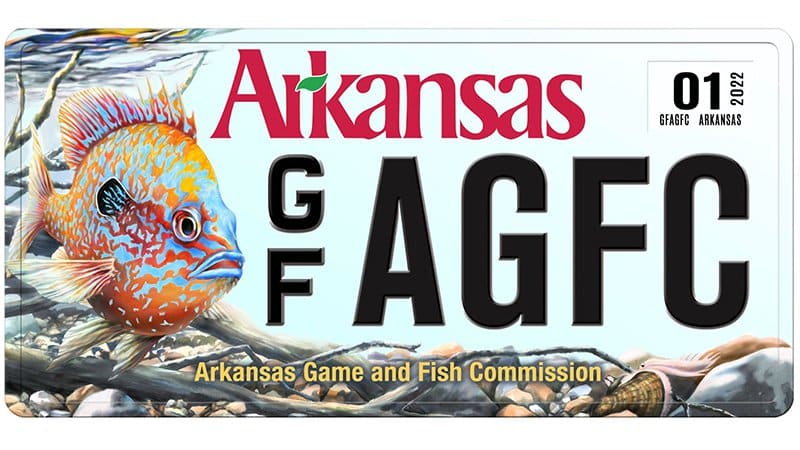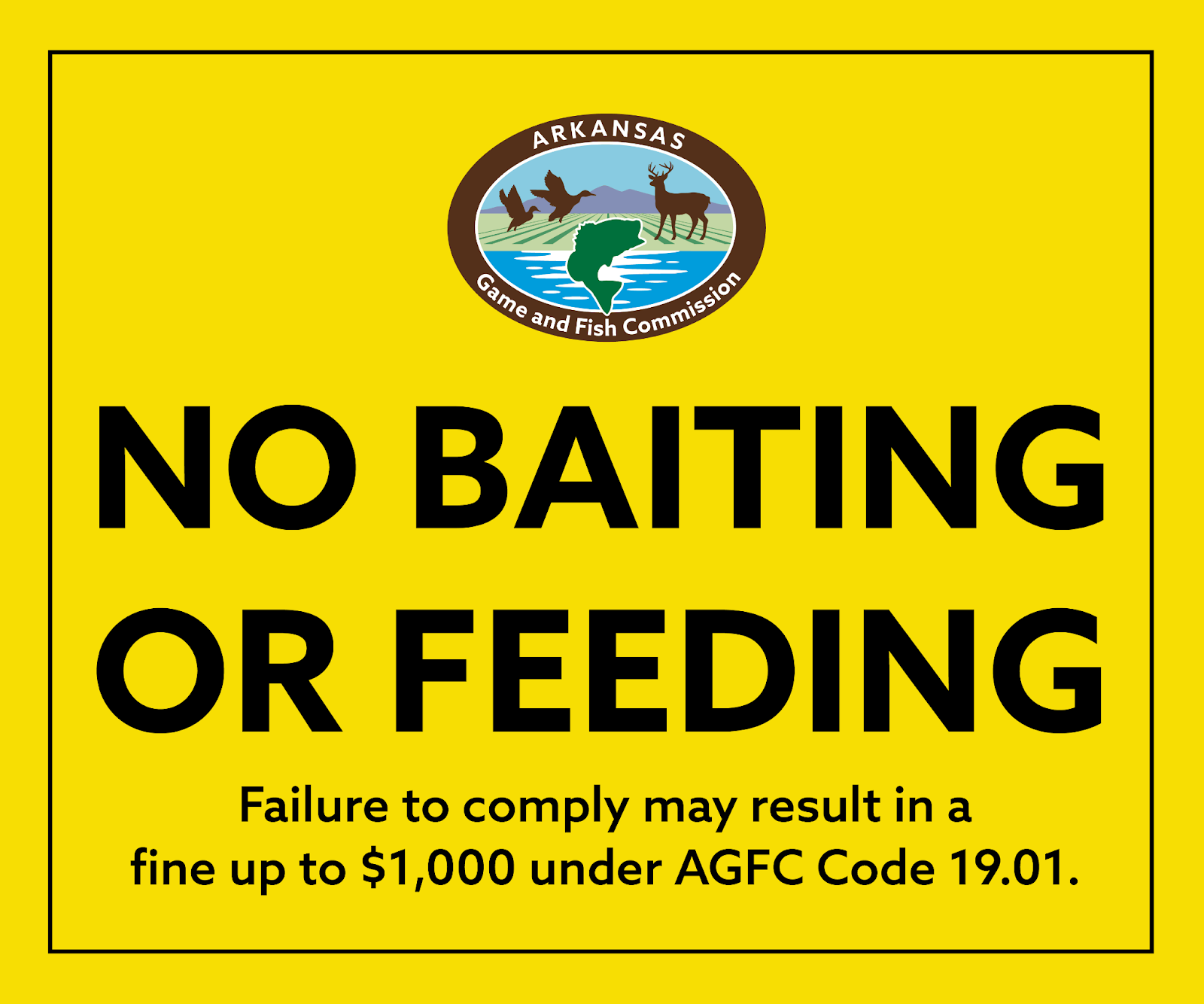Longear sunfish plate turns Natural State roadways into ‘Arkansas aquarium’
ON 02-02-2022

Feb. 2, 2022
Randy Zellers
Assistant Chief of Communications
LITTLE ROCK — Hunters, anglers and other conservation-minded Arkansans may want to head to their nearest Arkansas Department of Finance and Administration office as soon as they can to be sure they get the latest Arkansas conservation license plate, as this one is likely to sell out quickly.
The plate, designed by AGFC Graphic Artist Greta James and revealed at last October’s Commission meeting, showcases the color of one of Arkansas’s most charismatic and often overlooked species of gamefish: the longear sunfish. AGFC Fisheries Chief Ben Batten said the longear sunfish was chosen because of its bright blue and orange markings that rival the colors of many fish found in coral reefs and saltwater and its prominence as many Arkansas angler’s first catch.
“We have license plates for bass, trout and crappie, so we wanted to feature one of the lesser known species this year that really appeals to anglers, conservationists and anyone who just appreciates the beauty found in nature,” Batten said. “Greta did an outstanding job of capturing that in this license plate’s artwork.”
The plate also features a little Easter egg for those who take a second look up close. A speckled pocketbook mussel, a federally endangered species which is native to Arkansas, is hiding along the substrate at the bottom. Mussels in this species have a fascinating process of continuing their life cycles.
“Mussels in this family are actually very fascinating,” Kendall Moles, malacologist for the AGFC, said. “Like all native mussels, they require a fish to serve as a host for their offspring for a short time until they have developed enough to survive on their own. This mussel uses a fleshy lure to attract that host fish, which is usually a piscivorus (fish-eating) species. It then releases its larvae, called glochidia, onto the fish where they attach to its gills. They don’t cause any harm to the fish, and fall off to begin the life cycle again where they are carried.”
The Conservation License Plate program began in 2000 and has provided more than $18 million for scholarships and conservation education efforts in Arkansas since its inception. The program has topped $1 million each year since 2008. The longear sunfish is the fifth aquatic species to be featured on a Conservation License Plate. The previous four were largemouth bass (2002), rainbow trout (2005), black crappie (2012) and smallmouth bass (2015).
Visit https://www.agfc.com/en/about-agfc/conservation-license-plates to learn more about the AGFC Conservation License Plate Program and how to purchase a plate.
Recent News

Baiting wildlife illegal on Lake Conway
Nov. 22, 2024
Subscribe to Our Weekly Newsletter E-mails
Don’t miss another issue. Sign up now to receive the AGFC Wildlife Weekly Newsletter in your mailbox every Wednesday afternoon (Waterfowl Reports are published weekly during waterfowl season and periodically outside the season). Fishing Reports arrive on Thursdays. Fill in the following fields and hit submit. Thanks, and welcome!

